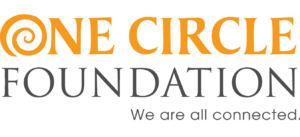Evidence for Girls Circle®
Girls Circle® is the first gender-responsive program in the country to demonstrate effectiveness in reducing delinquency for girls. Now listed on the Office of Justice Programs National Criminal Justice Reference Service and the previously available SAMHSA National Registry of Evidence-based Programs.
Girls on probation who participated in the study were randomly assigned to either the Girls Circle® program or a control group that received non-gender-specific traditional services. Recidivism rates after 12 months post-program completion were significantly lower for girls who had regularly attended Girls Circle® sessions than for girls who received traditional services.
The evaluation also revealed that girls who participated in the Girls Circle® program showed significant increases on pre- and post- program surveys in:
Use of Condoms
Educational Aspirations
Educational Expectations
The study supports policy implications, including:
The use of the Girls Circle® model as a means for reducing recidivism
Relational-Cultural Theory- recognizing girls’ connections with others as central to their healthy identities and development
Motivational Interviewing to facilitate meaningful changes
Proper Implementation and fidelity to the model
*The evaluation was funded by the U.S. Office of Juvenile Justice and Delinquency Prevention (OJJDP) and conducted in the Juvenile Probation and Court Services Department in Cook County, Illinois by Development Services Group (DSG). Evaluation Report Forthcoming.

Girls Circle® Evaluation Tool Kit
with a gender-relevant measurement tool designed specifically for use with Girls Circle® programs. Order now.
Reproducible within purchasing organizations. For internal evaluations, programs will need a statistician for t-tests. A Younger Girls Revised Survey which has no reference to drugs, alcohol, or sex has also been developed and is currently available by request to organizations that have obtained the Girls Circle® Revised Evaluation Tool Kit. Contact our offices at info@OneCircleFoundation.org or by calling (415) 419-5119.
The Girls Circle® Survey Measures:
School attachment
Avoiding Self-Harm
Positive Body Image
Avoiding Tobacco and Alcohol<
Communicating Needs to Adults
Making Healthy Choices regarding Nutrition, Self-Care, and Activities
Avoiding Sex or Using Protection if choosing sexual activity
Self-Efficacy*
* The Self-Efficacy measurement is a Schwarzer’s validated, integrated instrument.
An Updated Scoring Sheet is available to accompany your current copy of the Girls Circle® Evaluation Tool Kit. View the PDF.
Previous studies in 2005, 2007, and 2010 revealed statistically significant improvement for girls in Girls Circle® programs:
An increase in self-efficacy
A decrease in self-harming behavior
A decrease in rates of alcohol use
An increase in attachment to school
Increases in positive body image Increases in social support
2015 – THE GIRLS CIRCLE: AN EVALUATION OF A STRUCTURED SUPPORT GROUP FOR GIRLS: FINAL REPORT – Prepared for the Office of Juvenile Justice and Delinquency Prevention. Authors: Gies, S., Cohen, M., et al, Development Services Group.
2010 – Brief Summary: Circles Across Sonoma Title II Evaluation, Ceres Policy Research. A summary of findings of a community wide implementation of Girls Circle® for girls in contact with the Sonoma County Juvenile Probation Department.
2010 – Title II Evaluation Final Report, Ceres Policy Research
2007 – Girls Circle National Research Project, Irvine, A., Roa, J., & Cervantez, K., Ceres Policy Research. A study of outcomes for girls in Girls Circle® programs in prevention and early intervention settings.
2005 – Girls Circle: Summary of Outcomes for Girls in the Juvenile Justice System Irvine, A., Ceres Policy Research
2005 – Understanding Girls’ Circle as an Intervention on Perceived Social Support, Body Image, Self-Efficacy, Locus of Control and Self-Esteem. Steese, S., Dollette, M., Phillips, W. Hossfeld, B., & Taormina, G. (2005) – Full Report. Adolescence, Vol. 41, No. 161, Spring, 2006.
2004 – Executive Summary: Understanding Girls Circle. A summary of the findings of the national multi-setting study.
More Reports and or Literature:
Hossfeld, B., 2016. Girls Circle: A Gender-Specific Support Group ProgramPromoting Healthy Development
Hossfeld, B., 2013. Rites of Passage for Girls
Encyclopedia of Psychology and Religion · Article ID: 312287 · Chapter ID: 9336
© Springer 2013 Reprinted with permission http://www.springerreference.com/docs/edit/chapterdbid/312287.html
Hossfeld, B., 2006. Developing Friendships and Peer Relationships: Building Social Support with the Girls Circle Program. In C. LeCroy, & J. Mann, (Eds.), Handbook of Prevention and Intervention Programs for Adolescent Girls, Hoboken, NJ: Wiley & Sons.
Rough, J., & Matthews, G. 2005. Understanding the Intervention of Girls Circle on Friendship Quality and Self-Efficacy: A Replication and extension. Unpublished manuscript, Dominican University of California, San Rafael
